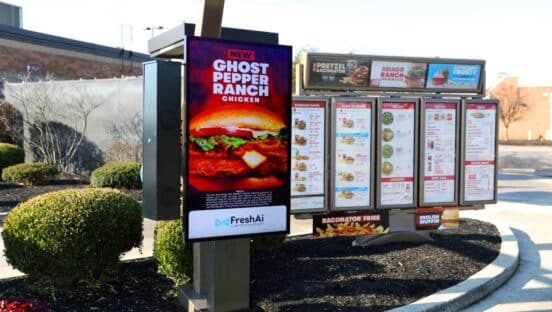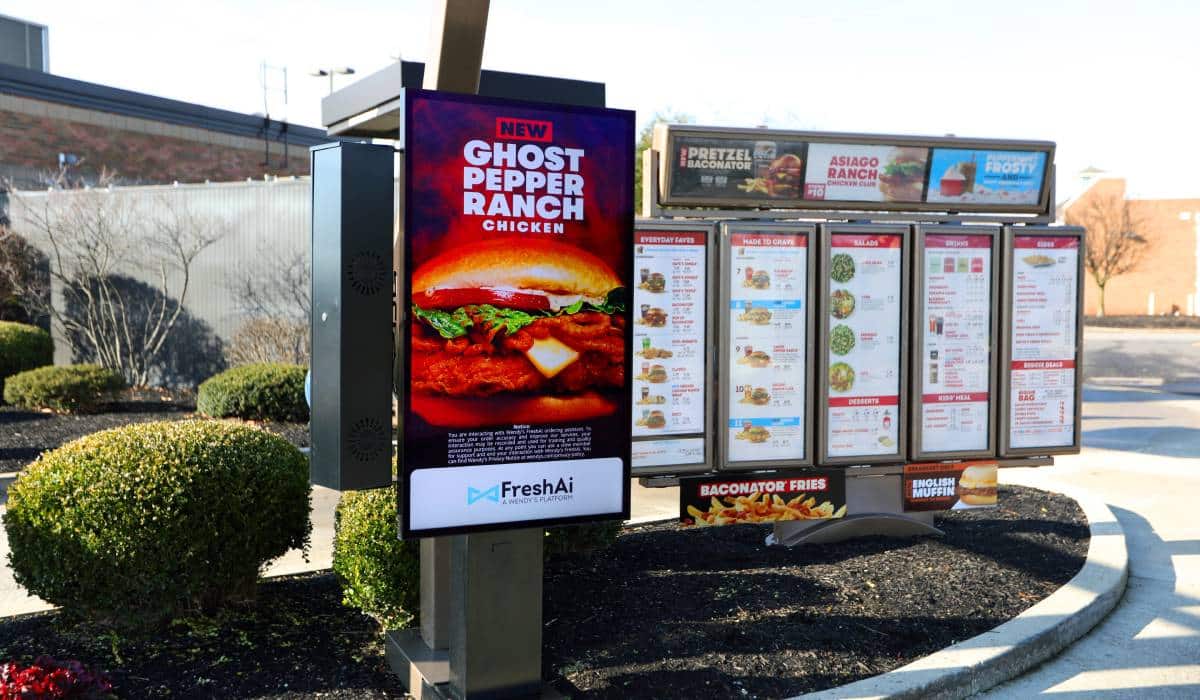Wendy’s chief technology officer Matt Spessard and the rest of the leadership team felt the need to pursue automated drive-thru voice ordering. But not because the chain was paying attention to what everyone else was doing in the industry.
Classically known as the brand that “doesn’t cut corners,” Wendy’s prides itself on having a long history of innovation, Spessard explains. The chain is constantly looking at opportunities to improve the business model. In the post-pandemic era, the brand was equipped with a drive-thru mixing 80 percent and a solidified partnership with Google, one of the world’s premier technology companies. To no surprise, AI at the drive-thru was a conversation that kept happening.
“We initially started spiking on it from an innovation perspective—is this a viable concept for the brand?” Spessard recalls. “We have a pretty actually industrialized innovation process here at Wendy’s, and once we started to spike on it and understand the capabilities of the underlying technology and the potential opportunities to improve the customer and employee experience, we felt like we had to go after it.”
READ MORE: How Wendy’s is ‘Outplaying’ the Competition by Making Connections
In June, Wendy’s began a pilot at a Westerville, Ohio-based restaurant, less than 30 minutes away from headquarters. The drive-thru technology uses Google Cloud’s generative AI, which can generate responses, adapt in real-time, and provide a personalized experience for each customer. The AI’s knowledge is based on data pulled from Wendy’s menu. The location features a double-drive thru, with the outer lane using AI technology and the inner lane using a normal speaker box.
Since the debut of Wendy’s FreshAI, “the technology has gotten better and it’s gotten better rapidly,” says chief information officer Kevin Vasconi. The Westerville location’s service time was recorded 22 seconds faster than the Columbus metro area average. About 86 percent of the time, the voice ordering system successfully handles an order without the intervention of an employee. In some cases, the accuracy rises past 90 percent. For interactions started by AI but escalated to a team member, orders are nearly 99 percent accurate. The AI understands to push the order toward a human if there’s noticeable frustration and if there’s repetition from a guest. In this example, the key is that an employee picks up where the machine leaves off as opposed to the customer having to start the process over.
If someone has questions about nutritional information or allergens, they’re referred to the website for the sake of speed. The biggest challenges AI would face aren’t too different from if a human were there, like dealing with ambient noise while also comprehending customized orders with several steps or a person repeatedly stopping and re-starting an order.
“We’ve all done it. My kids are in the back seat. I’m like, ‘What did you want again?'” Vasconi says. “The [AI] does remarkably well there but those are the kind of use cases I would say to give it the most trouble. And a lot of that is literally more speaker microphone issues than actually the agent itself. Because your kids are yelling at you, maybe they’re crying. Those are tough.”
Wendy’s FreshAI is now active in four company-owned stores in the Columbus market, and more are slated to open through the end of 2023 and into early 2024. The chain is also offering opportunities for franchisees to test the technology in 2024. Even before the pilot, Wendy’s corporate showed demos to operators at the restaurant support center and solicited comments. That feedback loop has been “incredibly helpful” in the AI reaching this point, Spessard says.
“To say [franchisees] have been excited is probably a bit of an understatement,” Spessard says. “I think in part because it’s not just the fact that this type of technology is available, but the way that it’s been constructed and the way that we built it together—those are elements as well because we have a pretty cool user interface. Seeing that full bag of OK, we can develop higher order accuracy, we can develop speed of service and we can consistently execute suggestive selling has been, I think, quite a big carrot for them.”
Wendy’s stresses that its AI is considered an assistant—not a replacement—for employee duties. With the voice ordering system covering the drive-thru, workers are able to spend more energy elsewhere in the restaurant. While the AI receives the order, a worker could get a head start on prepping the meal instead of waiting for it to drop onto the KDS. Other times, an employee could spend more time tending to customers in the dining room who may have questions about menu items or assistance with a kiosk.
Training workers to use the AI isn’t difficult, says director of area operations David Stockslager. The biggest learning for workers is that they still need to listen when the system needs help instead of treating it as an independent entity that runs without a monitor. Stockslager believes the technology puts Wendy’s in a different light with Gen Z and millennial employees. It showcases a “cool factor” that the brand has been building for a while.
Customers are intrigued too. Some will randomly walk up and listen to the AI simply out of curiosity.
“We have a lot of regulars around here. A lot where we’ve created even more relationships based off of it because they’ll come in and be like, ‘I’m starting to like this,'” says district manager Brian Dudzik. “As it’s going on, they’re like, ‘I can dig it because it’s precise, to the point, and there’s no lag.’ They’re starting to appreciate it more and more.”
An important thing to note is that Wendy’s FreshAI was built as a platform in which automation could touch several parts of the business, like the mobile app or Apple CarPlay. The chain just happened to start with the hardest use case at the drive-thru because “if you can solve the hard problems, the easy problems come a lot faster,” Vasconi says.
“I’ve been in this world for a while. Voice AI in the drive-thru is probably one of the more difficult problems to solve, especially in quick-service,” he explains. “You got ambient noise, you’ve got dialects, you’ve got speech to text in our particular case. Because we are a build-to-order restaurant, you have extreme customization of orders. And on top of all of that, you have this customer expectation that the reason they came to you is they wanted service fast. So that’s a problem statement. If you had an infinite amount of time to solve it would be hard. But we don’t have an infinite amount of time. We have like 30 seconds to go solve this problem.”
The pilot program extends an existing partnership between Wendy’s and Google Cloud. Starting in 2021, the fast-food chain has leveraged Google Cloud’s data analytics, artificial intelligence, machine learning, and hybrid cloud solutions to enhance its customer accessibility.








